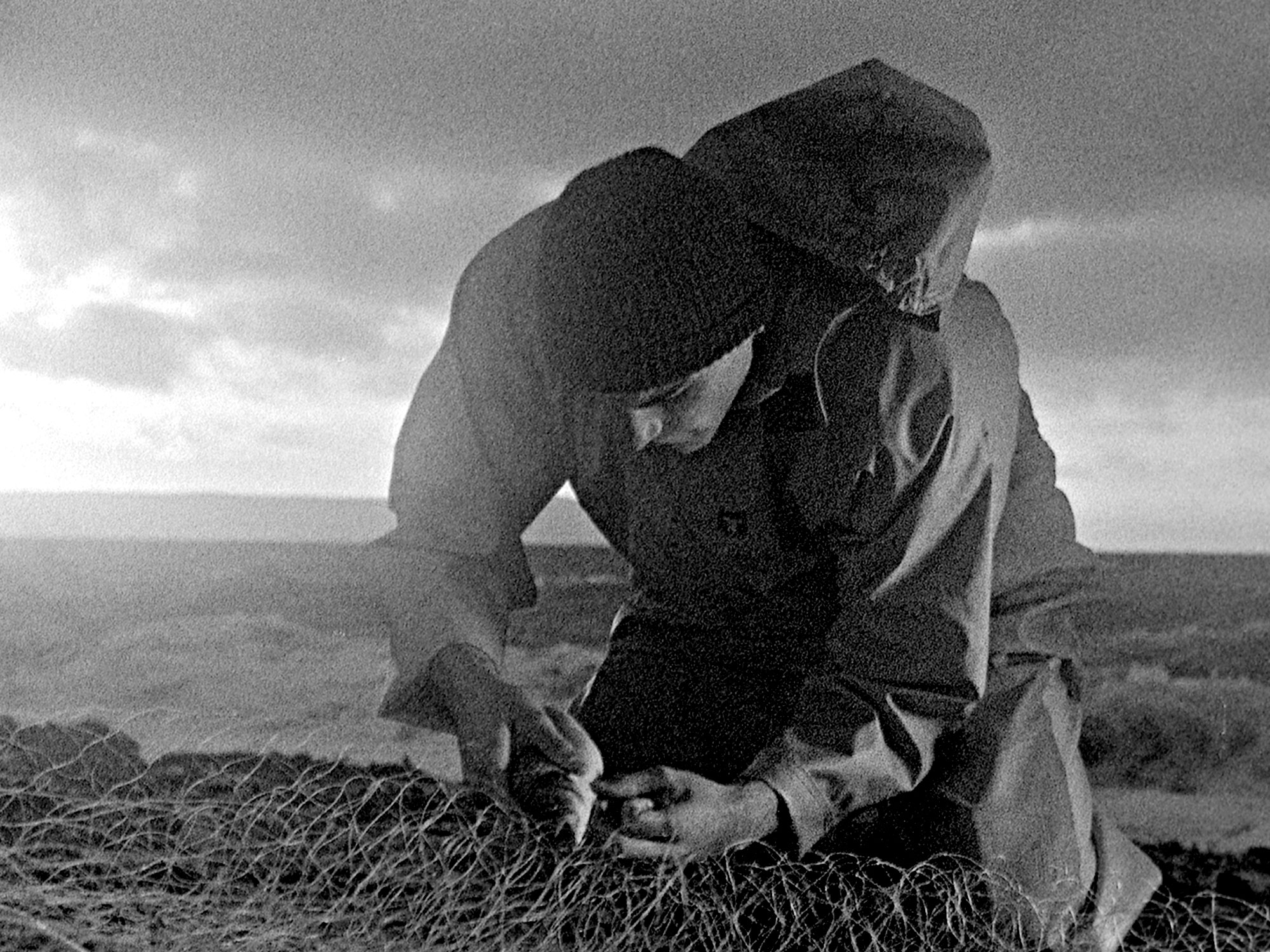
With Robert Eggers’ The Lighthouse and now Bait, 2019 is quickly becoming a banner year for experimental seafaring cinema. This half-mast monochrome gem from writer/director Mark Jenkin takes a somewhat trite and mundane subject – the gentrification of a Cornish fishing community – and spins it into a visually arresting expressionist mood piece that’s quite unlike anything you’ve seen before.
Filmed on location using a 16mm Bolex camera with black-and-white Kodak stock, it’s a flinty requiem for a rapidly vanishing way of life and a vital shot in the arm for British social realism.
Taciturn fisherman Martin (Edward Rowe) is quite literally rudderless, his brother Steven (Giles King) having turned their father’s trusty vessel into a pleasure boat for daytrippers. Compounding Martin’s malaise, the harbourside cottage he was raised in is now occupied by a couple of London yuppie types, who have splashed chintzy faux nautical decor all over the place. “Been modernised,” Martin laments to Steven. “Bloody ropes and chains – like a sex dungeon.”
As tensions between the locals and seasonal tourists simmer, Martin continues to ply his trade by casting a partially worn-out net from the shoreline and stashing what little cash he makes into a kitchen tin labelled ‘boat’.
While the narrative is anchored in contemporary concerns about the loss of regional culture and traditions, the analogue equipment and old-school editing techniques Jenkin employs give the film a distinctly archaic look and feel. High-contrast cinematography, overdubbed dialogue and extreme close-ups combine to immersive effect, creating the impression of discovering a lost relic of early cinema that’s been freshly salvaged from an old shipwreck.
Jenkin owes a debt to the pioneering documentary work of John Grierson and Robert J Flaherty, but as an example of elegiac post-modern ethnography, Bait is entirely its own thing.
The post Bait appeared first on Little White Lies.
![Forest Essentials [CPV] WW](https://s3-us-west-2.amazonaws.com/pcw-uploads/logos/forest-essentials-promo-codes-coupons.png)
0 comments